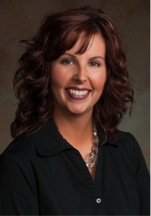Building Your Small Shop Toolkit
May 15, 2018
 Running a small non-profit organization is no easy endeavor. Executive directors and directors of development both need to have a strong understanding of finance, human resources and board management to be effective.
Running a small non-profit organization is no easy endeavor. Executive directors and directors of development both need to have a strong understanding of finance, human resources and board management to be effective.
AFP recently had a chance to chat with Amy Wolfe, president and CEO of AgSafe, about how to identify essentials aspects of finance, work/life balance, self-care and many others as they pertain to running a small shop. (Amy also covered these subjects in much more detail during her recent webinar, Building Your Small Shop Toolkit. If you missed the live webinar event on April 25, you can still sign up and listen to the archived event.)
Q. You talk about so many important issues when working in a small shop. What would you say is the key takeaway from your webinar?
A. As the executive director of a small shop, you have to wear multiple hats. Four that often create the greatest challenges are finance, human resources, board management and self-care. It is my goal that new executive directors, or directors of development aspiring to become executive directors, take the foundational elements shared in the webinar and use them as guide posts for further education, research and understanding. I also learned a number of these “nuggets of wisdom” the hard way and consider it my responsibility to share those hard-learned lessons so as to ensure others do not share the same fate.
Q. What are your top 3 “must-haves” for building small shops? Why are these essential to your organization’s success? Any tips for implementation?
A. 1. Understand your strengths and play to them. For the things that are a struggle, find either a paid consultant or a quality, reliable volunteer to handle that work. I am not a web guru, and after a few feeble attempts, I realized that I needed to find someone else to handle the management of our website. I connected with a local woman who did website work on the side for a great price. The extra money was good for her and her skill set was good for me (and in turn, my organization).
2. It’s more cost-effective to keep the donors you already have then get new ones. Make donor stewardship a priority! I write a minimum of 5 personal thank-you notes each week. I write notes to volunteers, donors, board members, and staff. I coordinate with my team on who needs a note more than others. These thank-you notes are in addition to our standard thank-you letters and follow-up recognition. People like being thanked and acknowledged for their contributions. And it’s nice to get a piece of mail that isn’t a bill or junk mail!
3. When evaluating fund development opportunities, never forget that major giving yields the best return on investment (ROI), while special events yield the least. Special events require an exhaustive amount of staff and volunteer time, along with financial resources. In a small shop, all types of resources are limited. As such, it’s critical to prioritize your time and remember what yields the greatest overall benefit to the organization.
Q. What’s the biggest challenge in building and running your small shop?
A. There is always more work to do then time or resources to tackle it. It is essential that small shop leaders learn how to prioritize their time, say “no” to non-essential work and set realistic boundaries. It’s all simple to say but significantly more difficult to actually do. By not sticking to those three areas, small shop leaders will find themselves wasting precious time, dollars and not centering their work on mission-centric efforts.
Q. If organizations can only do one thing regarding fund development, what should it be?
A. Developing and maintaining a major gifts program. While an organization’s short-term cash needs may require an annual giving tool (such as a direct mailer) or a special event, both of these tools ultimately use more time and dollars. If your organization doesn’t have a major gifts program, work on building it into your fund development program. If you are currently implementing various major gifts tools, evaluate how you can make them work more effectively. In the long run, it will produce the greatest results.
Q. What is your favorite part of running a small shop?
A. My paid nonprofit career has only ever been in small shops, and that’s been intentional. There is a comradery, connectiveness and ingenuity inherent in a small shop. In addition, I feel closer to the mission and the work of our organization when I can easily jump into the “meat” of what we do, which I believe is much easier to accomplish as part of a small shop.
Q. Anything else you would like to add?
A. When working in a small shop, it is so easy to become overwhelmed by the laundry list of work to be tackled. There’s a moment every week where I feel like there’s no way I’ll be able to get to everything that needs tending. It’s in those moments when I remind myself to put one foot in front of the other and tackle the work one task at a time. The adage of eating an elephant one bite at a time is critical.
The archived version of Amy’s webinar, Building Your Small Shop Toolkit is available for permanent download, or up to six months for streaming from time of purchase.



